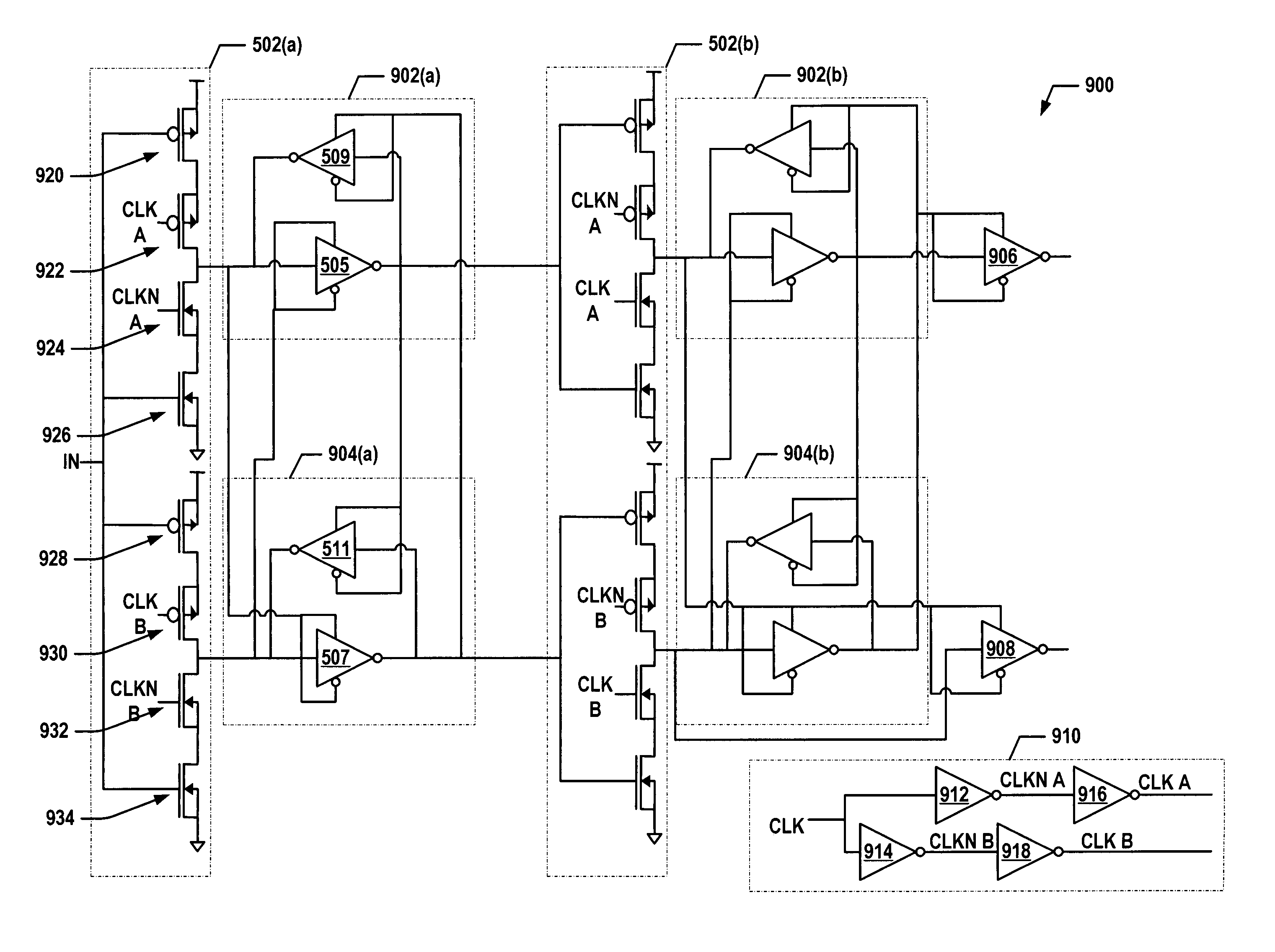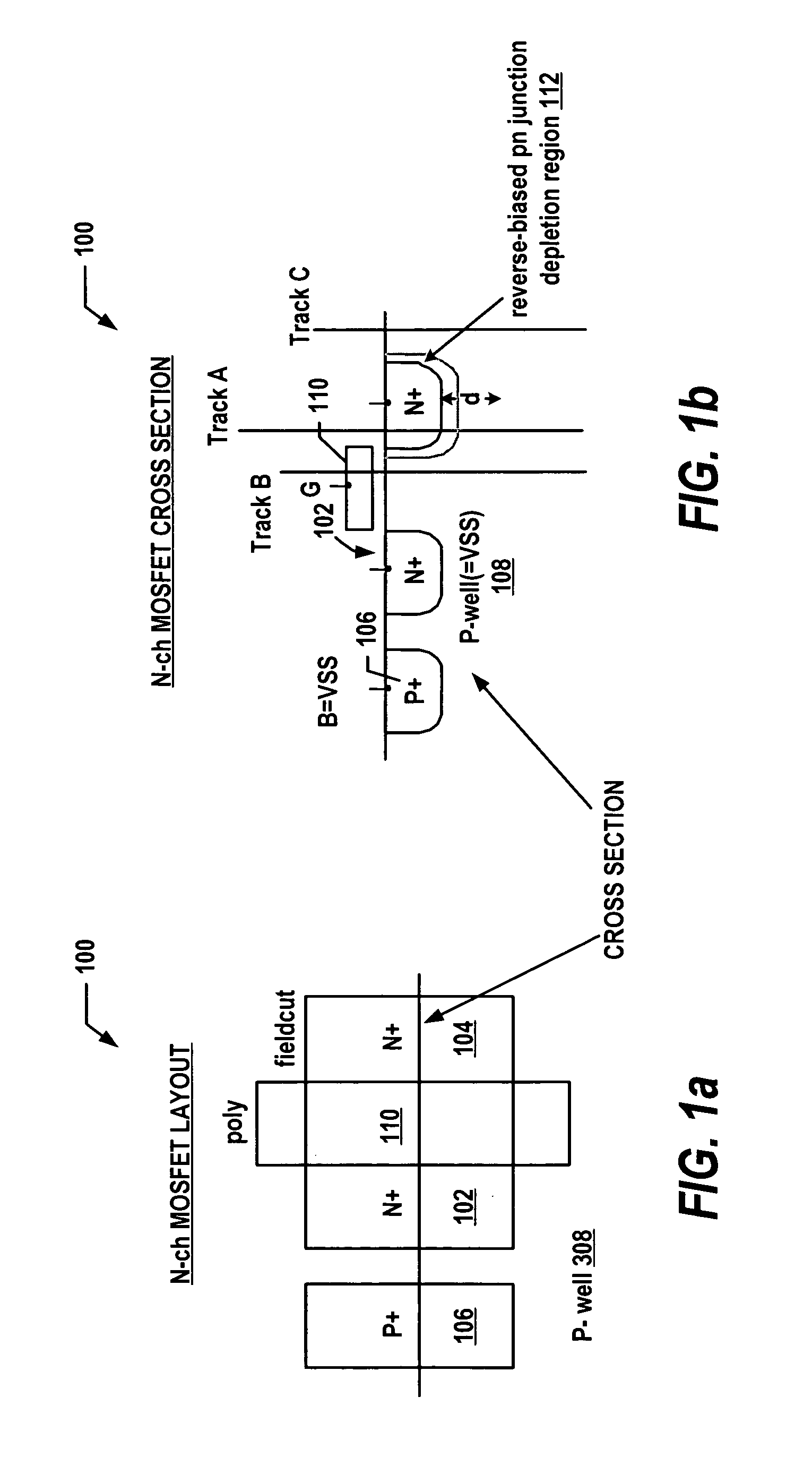Radiation hardening of logic circuitry using a cross enabled, interlocked logic system and method
a logic system and logic technology, applied in logic circuits, pulse techniques, reliability increasing modifications, etc., can solve the problems of large amount of radiation exposure of integrated circuits, large amount of disruption of terrestrial-based devices that use integrated circuits, and high density of integrated circuits
- Summary
- Abstract
- Description
- Claims
- Application Information
AI Technical Summary
Benefits of technology
Problems solved by technology
Method used
Image
Examples
Embodiment Construction
Overview
[0057]FIG. 4 is a block diagram illustrating exemplary architecture of a cross-enabled, interlocked logic system 400 for hardening a logic circuit against single-event upset (SEU) and / or single-event transient (SET) conditions in accordance with an exemplary embodiment. This cross-enabled, interlocked logic system 400 may be deployed with logic circuitry 402 that provides independently-obtained redundant signals. The construction (e.g., transistor-level fabrication and configuration) of the logic circuitry 402 may provide a first level of hardening against SEU and / or SET conditions.
[0058]The cross-enabled, interlocked logic system 400 may also be deployed with first and second feed-forward modules 404, 406 and first and second feedback modules 408, 110. By their construction and intercoupling (i.e., the manner in which the modules are coupled together), the first and second feed-forward modules 404, 406 and feedback modules 408, 410 provide not only the first level, but also...
PUM
 Login to View More
Login to View More Abstract
Description
Claims
Application Information
 Login to View More
Login to View More - R&D
- Intellectual Property
- Life Sciences
- Materials
- Tech Scout
- Unparalleled Data Quality
- Higher Quality Content
- 60% Fewer Hallucinations
Browse by: Latest US Patents, China's latest patents, Technical Efficacy Thesaurus, Application Domain, Technology Topic, Popular Technical Reports.
© 2025 PatSnap. All rights reserved.Legal|Privacy policy|Modern Slavery Act Transparency Statement|Sitemap|About US| Contact US: help@patsnap.com



